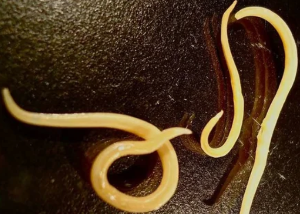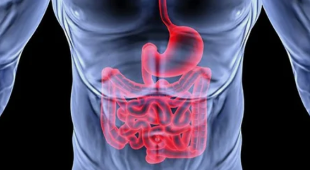Before you start a treatment against the parasites, it is important to determine exactly what is exactly the genre is present in the body. This is necessary in order to find effective treatment, as most medications are designed specifically to get rid of a specific type of de-worming.

If the to the more simple
Sometimes, you can hear the expression, that the patient is infected by protozoa earthworms. It should be understood that the easiest way is exclusively unicellular organisms, in the worst case – organize the colony. But they are never drained soil, such as worms and helminths.
Of the simplest of all the processes that take place in the cell cytoplasm and the institute of cell, while in earthworms anatomical organization much more complex: they have bodies differentiated to perform a specific physiological function. Therefore, to avail himself of earthworms is simple the root of all evil.
Sometimes, helminth parasites called protozoa parasites in comparison to insects: bed bugs, head lice etc, because these are way over the top of the evolutionary ladder. In this interpretation, the name of the to mere animals.
- Symptoms, treatment and prevention sarcocystosis in man.
- Happens to the black color of the man.
- What are the eggs of helminths.
The most common parasites
The most common endoparasites are certainly helminths (worms), which, according to various sources, is vitiated by more than 80% of the population of the planet.
A large number of these pests is divided into main types:
- hookworms are round worms (ascaris, pinworms,: Trichinella, whipworm and others);
- cestodes – tape worms (lantecy, pork, and the wave of tsepen, tapeworm etc);
- trematodes – worms from gills (liver, blood, lung, as well as the flukes that live in the gut).
Sometimes, you may experience more overall classification, according to which all types of parasites of people are divided into:
- translucent (intestinal), parasitic in the intestine;
- in tissue, localized in other organs and tissues.
Take a brief description of the most common types of de-worming.
Roundworms (nematodes)
- Ascaris are the most frequent round length of 20 to 40 cm, parasites in the small intestine, but before migrating into the body of the man, striking the circulation and the respiratory system. With the bowel of these parasites can be found in the liver and the gall bladder, the heart and the lungs. Common symptom of ascariasis, an allergic reaction.
- Pinworms are small worms, up to 1 cm, affecting the intestines, and lead to the enterobiasis with a disorder of functioning GASTROINTESTINAL tract, exhaustion, sleep disorders and other Characteristic of the availability of pinworms, the itching in the anus, where they lay their eggs.
- : Trichinella – these microscopic worms (their size is only a few millimetres) can cause disease – trichinellosis, which may, in the absence of treatment, result in death. The adults live in the body of the people in the muscles (respiratory, face, and other), causing muscle aches, fever, swelling, allergic skin rashes on the skin.
- Whipworm – small worms (length 4.5 cm, with the anterior part of the body
in the form of a wire), the larvae trihozefalez with diarrhea, abdominal pain and other symptoms that resemble appendicitis. Due to the poisoning of the body from anemia.
Tape worms (cestodes)
- Broad tapeworm, the length of the body, which comes up to 10 m, leads to the development of the difillobotrioz with nausea, weakness, vomiting, unstable chair, asthenia, and anemia.
- Swine tsepen has a length of 3 m to 8 m, a parasite mainly in the small intestine and causes both two of the disease: taeniasis with dyspeptic, asteno-car and abdominalnim syndrome, and cysticercosis with intoxication, intestinal, allergic, and respiratory syndromes. Depending on the location tsistitserki affects the muscles, brain, heart, eyes and others
- Wave of tsepen, the length of which can reach up to 18 m, called beef tapeworm infection, and is considered one of the most dangerous species of worms. If it is not to do the deworming, he can live in the body of the man to 18-20 years! Localized in the large intestine, leading to a strong toxicity of the products of their life, as well as diarrhoea, nausea, vomiting, stomach pain, anemia, allergic reactions, and problems with the nervous system.
- Dwarfish tsepen a length of only 1.5-5 cm source gimenolepidoz with dyspeptic, pain, and asteno-because the syndromes affect first of all, digestive and nervous system of the body, as well as the liver.
- Echinococcus is considered to be the smallest tape worm parasite – its length is about of 2.5 to 8, rarely 9-mm, but the contamination has dire consequences in the form of damage to the liver and lungs, where they form cysts and institute causing dysfunction of these organs.
Worms from gills (trematodes)
- The Fluke, or fluke the shape resembles the leaf of the length of 30 mm to 50 mm and a width of 8 to 13 mm, has a suction cup. It damages the hull of the liver and the blockage of the bile ducts, is able to interrupt completely the flow of bile. Can lead to cirrhosis, jaundice and cancer of the liver.
- The cat (siberian) Fluke, the cat or the fluke, flat worm with a length of 4 to 13 mm wide, the Location of the ducts of the gallbladder, liver and pancreas. Generates opisthorchiasis with the development of gastritis, ulcers, pancreatitis, acute cholecystitis, up to a cancer of the liver, which can lead to death.
- Lung Fluke is of the form ovode, red-brown body with small spikes, a length of 7.5 mm to 12 mm with a width of 4 to 8 mm in the lungs, causing inflammation, a pleural effusion, fibrosis, and lung cancer. During penetration in the brain causes encephalitis and a meningo-encephalitis.
- Schistosoma (flukes) – to gonochoriques a size of 1 to 2 cm of eggs causes a hypertrophy of the liver, spleen, and lymph nodes, formation of polyps in the intestine, diarrhea, granulomatous inflammation, leading to cancer of the bladder.
The diseases they cause
The most dangerous parasites, living in the body of the man, can cause various diseases. Very often, the disease, cause-specific parasite, has the same name as him. Thus, the different types of parasites in the body of the man can cause the following diseases:
- some parasites inside the man (the staves) cause the trematodes;
- the cestodosis occur during the defeat of the bands of worms;
- if an adult or a child in the intestine are roundworms, then diagnosed the nematodes;
- the leeches cause hirudins;
- Arctocephalus cause skrebni.
However, the parasites in the body of a man can be hit is not an authority. Depending on the location of the parasites in the body of the man associated with these parasitic diseases:
- When the defeat of the eyes may occur onchocerciasis, demodicosis, cysticercosis and health;
- Diseases of the GASTROINTESTINAL organs-causing unicellular parasites and worms – ascariasis, trichinosis, hookworm, enterobiasis, intestinal health and metagonimus;
- The brain diseases – echinococcosis, toxoplasmosis, alveococcosis, and cysticercosis;
- Diseases of skin – demodicosis, pediculosis, scabies, the pulicosis, trombitas, ftiras;
- Pathology; pulmonary echinococcosis, ascariasis, general acarine disease, alveococcosis, tomingas et al.;
- Diseases of the liver – the opisthorchiasis, alveococcosis, echinococcosis, clonorchiasis;
- In the mouth, the ears and the mouth of the parasites can cause different types of myiasis;
- Cardiac pathology – dirofilaria and echinococcosis;
- Diseases of the genito-urinary system – alveococcosis, urate measy, echinococcosis;
- Pathology of blood vessels – filaretos and schistosomiasis.
Flat helminths
Tape worms are parasites, or gills (trematodes), have the characteristic leaf shape of the body. The structure of their organized enough — they have digestive, excretory and the nervous system. During the life cycle of change their masters.
The distribution has taken these types:
- The flute (the moat), or opistorchis. Most often, the infection occurs by the raw fish, which causes enough dangerous disease opisthorchiasis. The reproduction of the parasites occurs very quickly, which can cause serious consequences. The to have a yellowish hue, and their length can exceed 12 m is being fixed in the human body, these parasites cause internal bleeding, disrupt the bile reflux, can cause a dysfunction of the pancreas. The dangerous effects: cholangitis purulent type ahilii, cholangiocarcinoma.
- The Fluke. Intermediate host are the representatives of cattle, and a person infected by eating poorly processed meat affected by the animals. Because of the infection develops the disease fascioliasis in the liver. By the size of these worms are relatively small (not more than 5-6 cm), but they are capable of causing dangerous pathology: abscess of the liver, cholangitis, hepatitis. By the blood of the larvae of the parasite can be distributed throughout the body.
- Shistosoma. The worm is able to install itself in the blood vessels, consuming the components. To the rest of his life may be the development of varicose veins, the formation of the institute. The main symptom of intensive intoxication general.

In the body of the man, you can discover a large amount of a variety of parasitic worms that may be rooted in different internal organs. They cause chronic diseases that can cause serious illness. At the onset of the signs of helminth infection of any type, you need to consult a doctor for starting an appropriate treatment.
Wave of tsepen
Wave of tsepen can reach a length of 12 m Is a hermaphrodite, which can produce more than 100,000 eggs, they will appear with the feces. The eggs drop into the soil, and on plants, these plants eat the cattle. In the body of the animal the eggs economic larvae, which are located in the muscles. If a person consumes food contaminated beef, the larvae fall into the intestine. Person-to-person, the larvae are not transmitted.
The adult worms have a head with four suckers, the neck and the body, composed of segments. The number of segments is constantly growing, mature segments break off the worm and out of the gut of the man outside.
Wave of tsepen
The symptoms of the disease are nausea, vomiting, dyspepsia, increased salivation, dizziness, weakness, nervousness, fatigue, abdominal pain uncertain of the location, allergies, changes in appetite.
In order to bring a wave of tsepen of the body, a circuit composed of 3 steps: in) (body purification), treatment with anti-parasitic drugs, the food and drink, herbal medicine).
Tape worms
To entozoaires belt, or cestodes, includes a variety of tape worms, the length of which can vary from 2 mm up to 10-12 m Body of these parasites, the specific structure of several segments, the neck and head with suction cups (brackets) for fixing on the walls. The cestode — hermaphrodites, and the eggs are located in the segments. The nutrients in worm sucks through the whole surface of the body.
Distinguish the most common types of tapeworm:

- Alveolar demand information. Are capable of inducing cholangitis and abscess, and also spread to the spleen, the muscles and the brain.
- Taenia, or tapeworms. Wave of tsepen excites the disease, beef tapeworm infection and is usually found in the intestine. Serious complications — cholecystitis, intestinal obstruction, appendicitis. This worm is able to cause such effects: atrophy, intestinal shell, glossitis Gunther, leukopenia.
Protozoa
Toxoplasma gondii (Toxoplazma gondii) – a type of parasite, the primary host are cats. Can also be transported to the warm-blooded animals and man. A disease caused by the Toxoplasma, called toxoplasmosis. The development of the disease easy, with the exception of the defeat of the fetus inside the womb of my mother the time of the pregnancy, which creates serious consequences for both the mother and the fetus, even death.
Amoeba simple unicellular organism, which is considered to be one of the first living beings. A disease caused by the amoeba, called amebiasis. The infection of the gut, with the force of the defeat of the intestine with the advent of bloody diarrhea, the possible formation of intestinal side of households with a penchant chronic leak.
The malaria plasmodium – the simplest single-celled creature in the cycle of development in which the person has a temporary master, and the mosquito – standing. In the human body parazitirujushchy plasmodium presented the 4 types:
- P. malarie – tour four-day malaria;
- P. vivax — three days malaria;
- P. ovale — three days ovale malaria;
- P. falciparum — tropical malaria;
The length of the interval between flare-ups depends on the type of pathogen. In addition to all this, anemia, as well as the plasmodium hits the white blood cells, red blood cells.
Giardia — simple pear-shaped, which have two hearts and four pairs of flagella. The main source is the pig, and the people. Giardiasis — a common disease, with the defeat of the liver and the small intestine. The disease can be mild or severe.
Trichomoniasis – the flagellated single-celled organisms in the form of a pear, cause the disease, trichomoniasis, are transmitted sexually and beat urinary system. Become pale as the sick men and women, but in men, the disease is usually asymptomatic.
The trypanosome – rod single-celled protozoan flagellates. Cause a serious disease, trypanosomiasis, mortally dangerous for the human sleeping sickness. Vector of trypanosomiasis, are the bugs, the tsetse fly. In the body of the host, the parasite multiplies in the skin, and then enters the lymphatic system and the blood. Most of the pathogens found in the spinal cord and the brain, which destroy cells and assign their toxins.




























